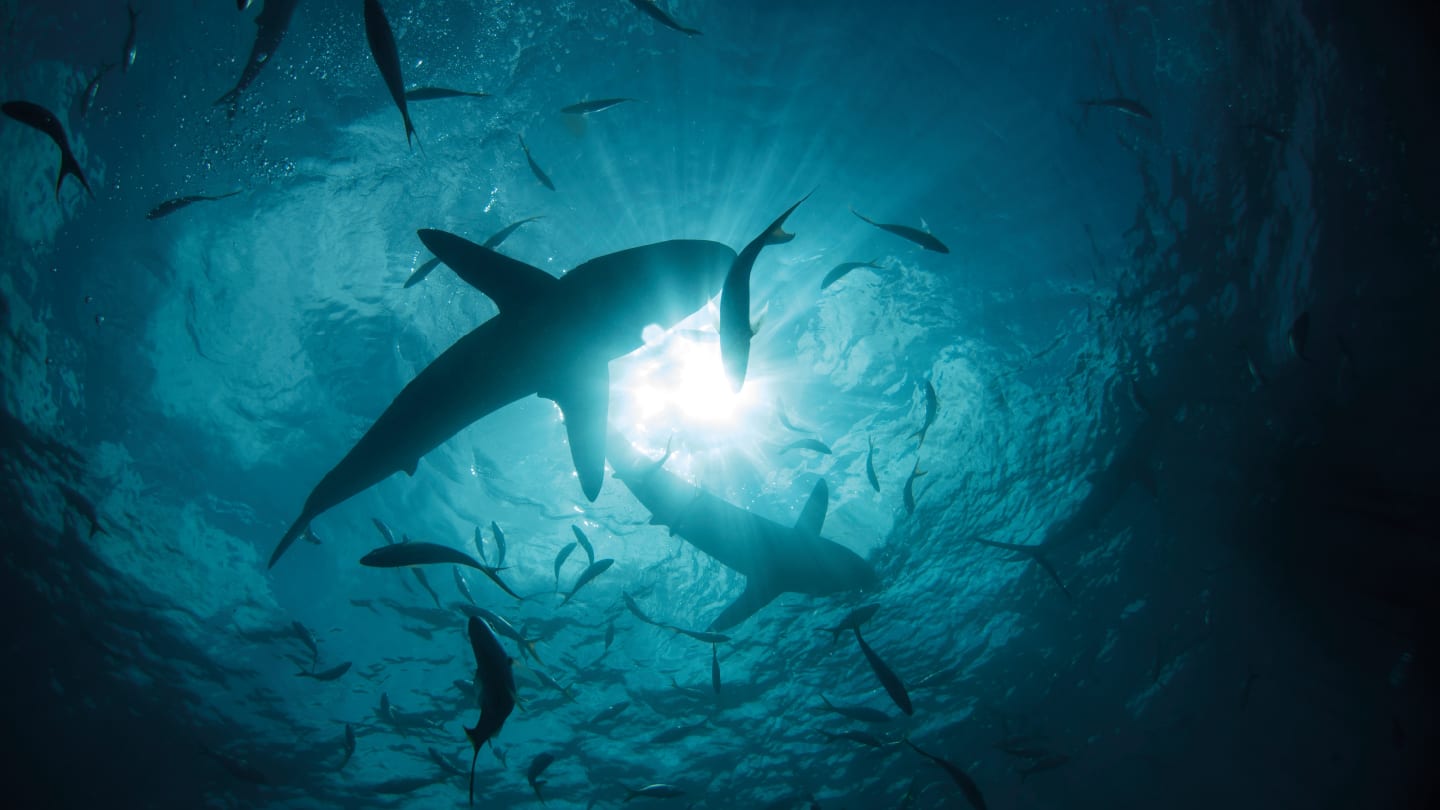
Nano Mirrors in Shark Skin Reveal Dynamic Color-Shifting Secret
Blue sharks owe their brilliant hue – and possibly their ability to change color – to a surprising source: nano-scale mirrors hidden inside their skin.
In a study presented at the Society for Experimental Biology Annual Conference (July 2025), researchers at City University of Hong Kong discovered that tooth-like skin scales (dermal denticles) in Prionace glauca house guanine crystals and melanin pigments arranged in microscopic layers. These act like biological mirrors and light filters, reflecting blue while absorbing other wavelengths.
The team, led by Dr. Viktoriia Kamska and Professor Mason Dean, used electron microscopy, spectroscopy, and computational simulations to show that subtle shifts in the spacing of guanine layers – possibly triggered by environmental changes like water pressure – could shift the shark’s coloration toward green or gold. This suggests blue sharks may use nanoscale structures not only for camouflage but for dynamic color tuning.
The discovery opens avenues for bio-inspired designs in sustainable materials, such as non-toxic, pressure-responsive coatings or marine camouflage systems, combining speed, stealth, and eco-efficiency in a single structural blueprint.
Live Tissue “Sentinels” Detect Infection via Intracellular Motion
A new approach harnesses the subtle internal motions of organoid tissue to rapidly detect bacterial infections – potentially hours before traditional methods. In Scientific Reports, researchers used biodynamic imaging (BDI), a type of digital holography, to measure intracellular Doppler shifts in colorectal adenocarcinoma microclusters exposed to pathogens.
Even at very low infection doses (as little as 100 colony-forming units per milliliter), measurable changes in light scattering patterns emerged within 2–7 hours. These fluctuations stem from altered intracellular dynamics triggered by bacterial presence, not from direct bacterial scattering – a distinction confirmed through control experiments using formalin-treated tissue.
The technique works without needing to culture bacteria or add fluorescent tags, offering strain-agnostic infection detection that could speed diagnosis and guide treatment earlier. The authors argue this “sentinel effect” could complement or replace slower diagnostics in clinical microbiology, particularly for sepsis. Future work aims to apply this method to antibiotic susceptibility testing.
Raman Probe Streamlines Tumor Margin Detection in Head and Neck Surgery
A clinical team in Germany has established a real-time workflow for using in vivo Raman spectroscopy to assess tumor margins during head and neck cancer surgery. The non-invasive technique, powered by a custom-built CE-compliant system called Raman invaScope, enables label-free molecular analysis directly on tissue during operations – bypassing the need for time-consuming frozen section biopsies.
In an ongoing trial with 30 cancer patients and 10 controls, spectra were collected from tumor sites, margins, and healthy tissue. A learning curve saw measurement times drop from 30 minutes to under 2 minutes after 15 cases. Spectral differences between tumor and healthy tissues were consistently detected across diverse anatomical regions, with reproducibility confirmed through ex vivo comparisons and histopathological validation.
The device’s integration into surgical workflows was aided by ergonomic design, software-guided operation, and pre-surgical calibration during anesthesia induction. Future steps include building a classification model and combining Raman with wide-field imaging to ensure comprehensive margin assessment.
Brain Chemistry Reveals Distinct Markers of Fatigue in ME/CFS and Long COVID
An ultra-high field 7T magnetic resonance spectroscopy (MRS) study has identified key brain chemical differences in people with myalgic encephalitis/chronic fatigue syndrome (ME/CFS) and those with long COVID, offering insight into the biology behind fatigue and “brain fog.”
In the largest study of its kind to date, researchers scanned the anterior cingulate cortex and calf muscle of 73 participants, including ME/CFS patients, long COVID patients with persistent fatigue, and healthy controls. ME/CFS patients showed elevated lactate levels in both brain regions – a potential marker of mitochondrial dysfunction or neuroinflammation. In contrast, long COVID patients had significantly reduced total choline in the dorsal anterior cingulate, which the authors link to previous findings connecting choline to vascular function and cognitive protection.
Muscle chemistry showed no clear differences, though a trend toward lower carnosine in patient groups may relate to exercise-induced acidosis. These findings suggest that although ME/CFS and long COVID share clinical symptoms, their neurobiological underpinnings may differ – a distinction with important implications for research and treatment.
Real-Time Pollutant Tracking with Laser-Precision Pocket Tech
Air quality monitoring may soon leap from lab benches to city streets, thanks to a portable laser-based device under development at TU Graz.
Physicist Birgitta Schultze-Bernhardt has received a €150,000 Proof of Concept Grant from the European Research Council to advance MULTI TRACE, a compact sensor that can detect multiple airborne pollutants – such as nitrogen dioxide and ozone – simultaneously and within fractions of a second.
At the heart of the system lies a dual-comb spectrometer, previously developed in her ERC-funded project ELFIS. The device uses laser light reflected through ambient air to identify pollutants by their unique absorption fingerprints. By analysing how different molecules filter the laser’s spectral lines, the system can determine pollutant concentrations with high precision.
Unlike conventional setups, which require separate instruments for each analyte and lack real-time capability, this single, field-deployable device aims to bring laboratory-grade sensitivity into dynamic urban, industrial, and even forest environments. The technology could also open new avenues in breath diagnostics, identifying disease-linked molecules exhaled by patients.
A working prototype is expected within 18 months.




